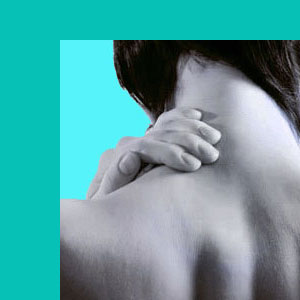
A herniated disc C6-C7 is the second most common location for a cervical herniated disc to occur. This intervertebral level lies at the base of the neck and is an area of significant disc degeneration in most people by the age of 30.
C6/C7 herniations are some of the most common diagnostic scapegoats for upper back, neck and arm symptoms, but can actually be responsible for causing pain, tingling, numbness or weakness in some unfortunate patients.
This commentary will detail disc prolapse conditions at C6/C7. We will explore why they take place and how they may enact painful symptomatic expressions through nerve or spinal cord compression processes.
Herniated Disc C6-C7 Defined
C6/C7 is the last intervertebral disc fully contained within the cervical spine. C6/C7 bears the brunt of the wear and tear from neck movement and athletic strain. The head is a large and heavy object on a rather thin pole of vertebral bones and even thinner spinal discs. As the head moves about voluntarily, and involuntarily due to accidents or trauma, the forces which act upon C6/C7 can be extreme.
Degenerative disc disease at this level is normal and expected and not generally the source of any severe or lasting pain or neurological symptoms. However, disc degeneration in the neck is certainly is one of the main contributors to cervical herniated discs.
Spinal Disc Prolapse C6-C7 Facts
Along with C5/C6, this level is the most commonly implicated in a variety of pain syndromes and some often illogical neurological symptomatic expressions. C6/C7 is a small and delicate intervertebral level which is virtually guaranteed to look beat up on x-ray and MRI films, especially as a patient ages. The region is prone to not only disc herniations, but also a loss of normal lordotic spinal curvature and a build up of osteophyte material enacted by the osteoarthritic processes.
However, even with its predisposition to all these common diagnostic scapegoats, pain in the neck, arms and upper back is blamed on herniated discs at C6/C7 far more often than it ever truly occurs. Remember, in order for pain to result, no matter how severe the herniation looks, the disc material must compress a nerve tissue directly or irritate it through chemical radiculitis.
Herniated Disc C6-C7 Experiences
I was shocked to see my own horrific looking herniation at this level after undergoing a cervical MRI in 2008. My C6/C7 is pressing deeply into the actual spinal cord, creating a disturbing image on the diagnostic film. The effect was the typical nocebo and enacted symptoms in me that I never had prior to discovery. Luckily, I understand this negative conditioning process and used the alternative medical techniques of knowledge therapy to regain control of my life, despite still having some degree of fear concerning this drastic disc pathology.
Actual structural concerns at C6/C7 do exist and may even be the real source of symptoms in some patients. However, if your pain has resisted a variety of seemingly appropriate treatments, I can say without much doubt that the diagnosis is likely to be wrong and the herniated disc is not likely to be the actual reason for the pain, but merely a coincidental imaging finding.
Always insist on evaluation of any cervical herniation by a specialist in spinal neurology. This will help to separate the innocent disc abnormalities from the significant and pain-generating variety which do actually affect nerve structures. I am still working through this process myself.
Herniated Disc > Herniated Disc Injury > Herniated Disc C6-C7




